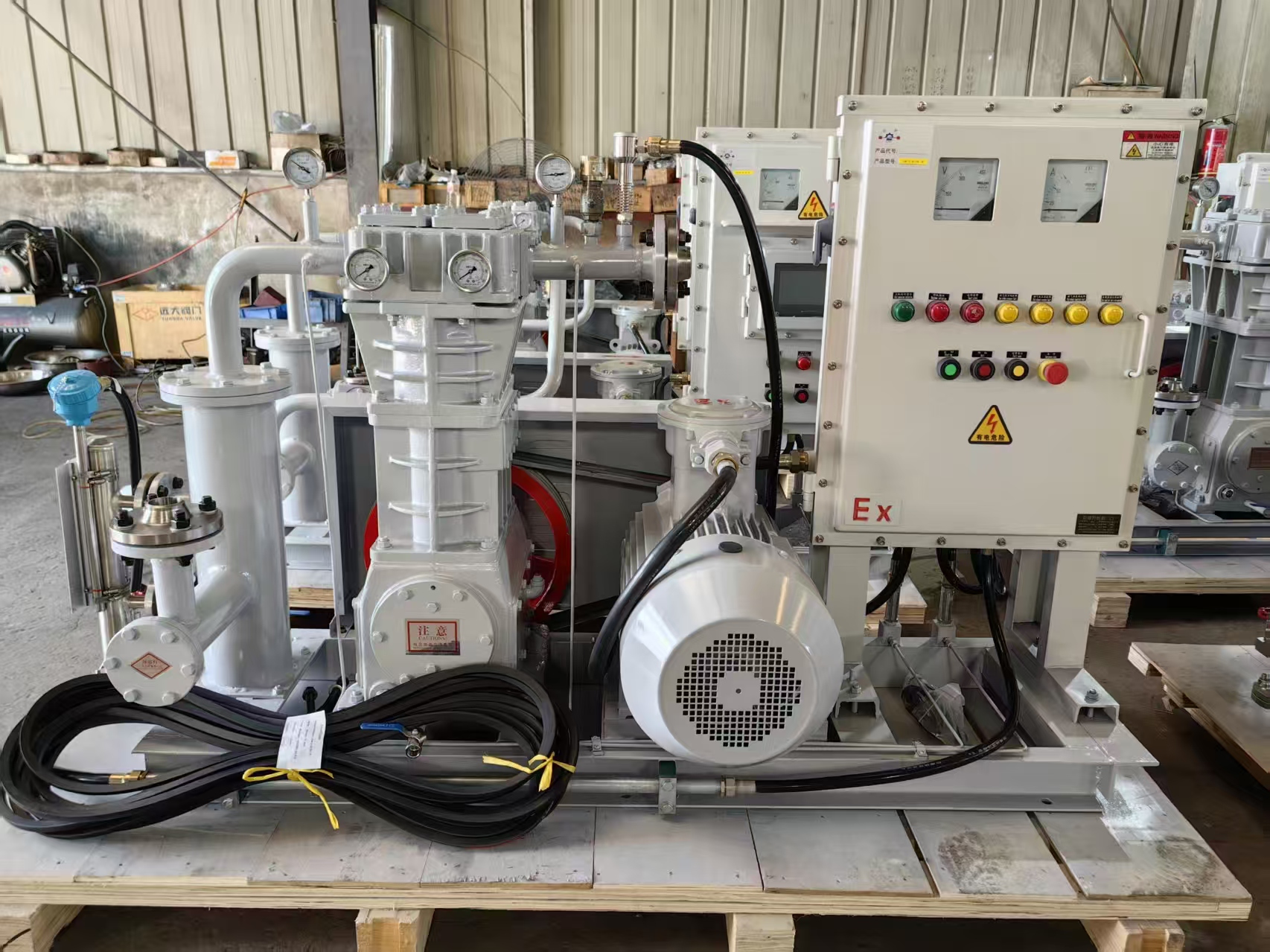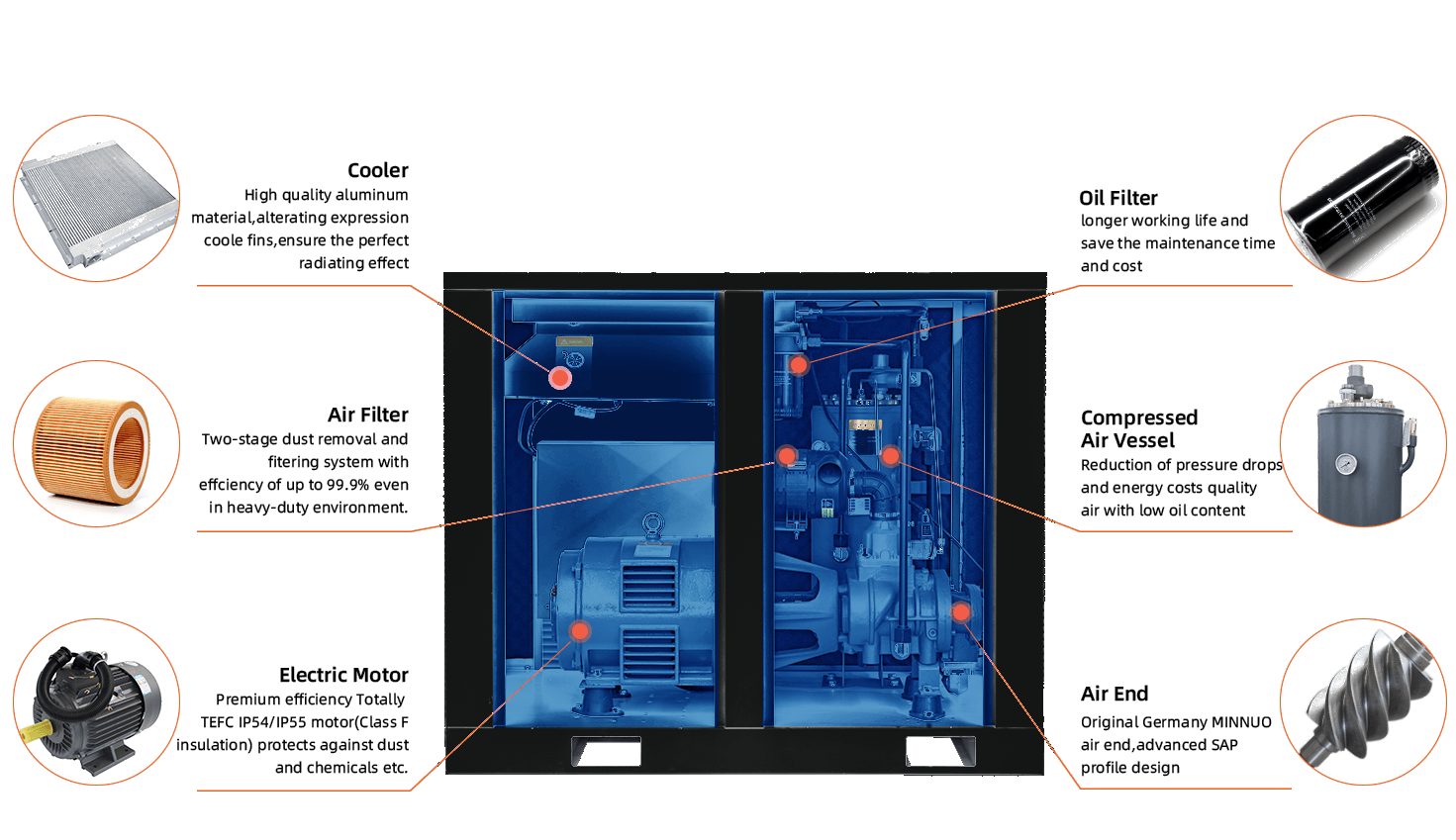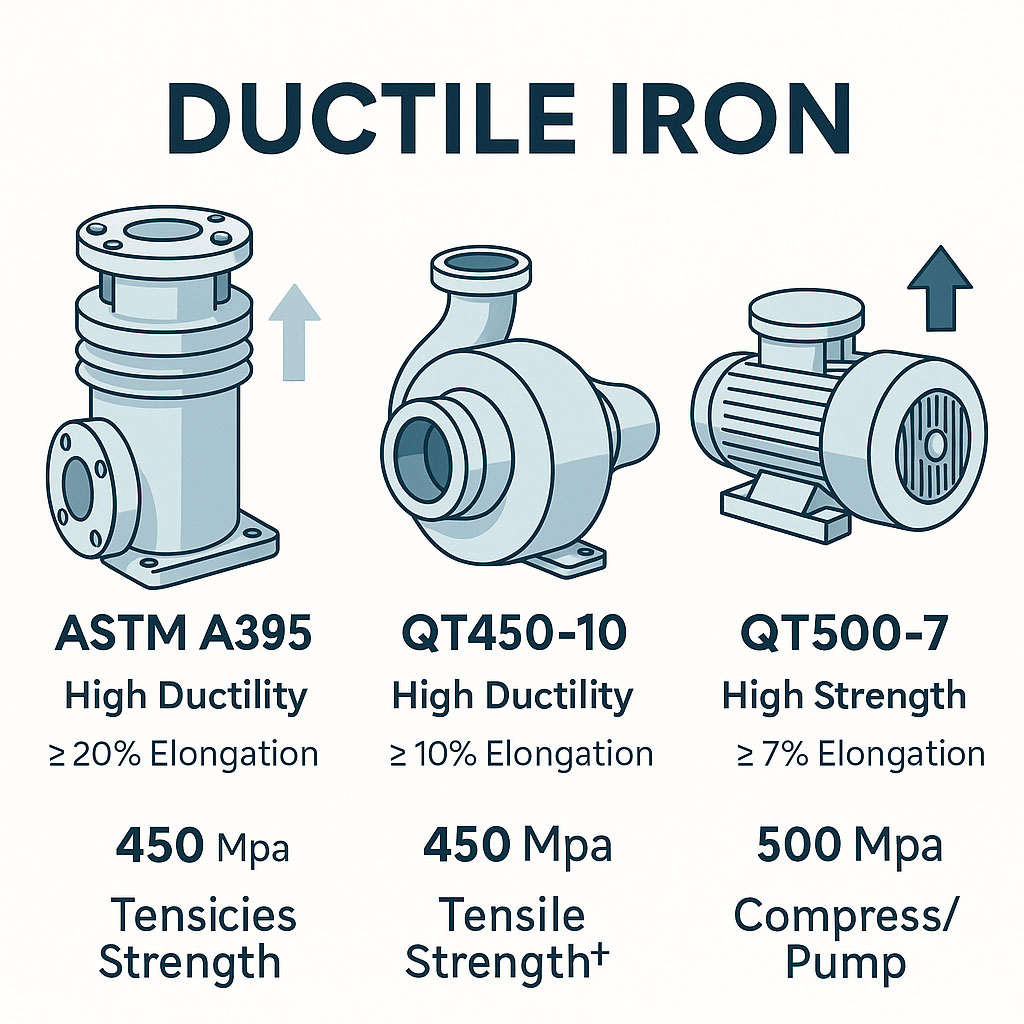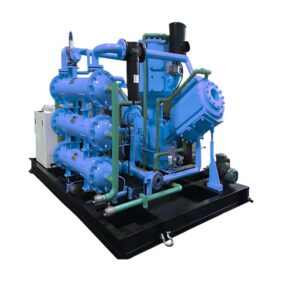A gas air compressor converts mechanical energy into compressed gas that powers tools, fills cylinders, or feeds production lines. Although air units dominate workshops, gas-handling models tackle CO₂ recovery, home CNG filling, and hydrogen fueling. This guide explains the working cycle, core components, and how to choose between a reciprocating gas compressor and a screw design.
1️⃣ Compression Basics – From Inlet to Discharge
-
Inlet Stroke – The intake valve opens; low-pressure gas flows into the cylinder or rotor chamber.
-
Compression – The piston rises (or rotors mesh), shrinking volume, boosting pressure, and raising temperature.
-
Discharge – Once target pressure is reached, the outlet valve opens, releasing compressed gas to downstream storage or piping.
Oil-free variants keep lubricant out of the gas path, essential for food-grade CO₂ and home CNG installations.
2️⃣ Key Components Explained
| Part | Function |
|---|---|
| Cylinder or rotors | Primary compression chamber |
| Valves or slides | Control inlet / discharge timing |
| Intercooler / after-cooler | Remove heat between stages |
| Separator | Strips oil or condensate (if lubricated) |
| Safety valves | Protect against over-pressure |
Transition words such as furthermore, therefore, and meanwhile guide you through each system in a logical flow, boosting readability.
3️⃣ Reciprocating vs Screw Compressor – Which Fits Your Gas?
| Factor | Reciprocating Gas Compressor | Screw Compressor |
|---|---|---|
| Pressure capability (>30 bar) | Excellent | Limited* |
| Flow rate stability | Pulsating | Steady |
| Maintenance intervals | Longer parts life | Less downtime |
| Footprint / noise | Larger, noisier | Compact, quiet |
*Oil-injected rotors usually max out near 25 bar without a booster.
Therefore, high-pressure CO₂ bottling or tube-trailer CNG prefers pistons, while low-pressure biogas upgrade lines lean toward screws.
4️⃣ Application Snapshots
-
CO₂ Gas Compressor – Beverage plants recover fermentation CO₂, then compress it to 30 bar for liquefaction. A two-stage oil-free piston ensures food safety.
-
CNG Gas Compressor Home – Home refueling units boost 8 bar utility gas to 200 bar overnight. Compact reciprocating packages with built-in dryers work in garages.
-
Offshore flare gas capture marries a screw pre-compressor with a reciprocating booster, merging both technologies for optimum efficiency.
5️⃣ Efficiency & Safety Tips
-
Monitor temperature rise; every 10 °C cut extends valve life.
-
Use intercoolers between stages; meanwhile pressure ratios stay balanced.
-
Install zero-loss drains to reduce purge waste.
-
Schedule leak checks quarterly; compressed gas is expensive.
-
Select explosion-proof motors when handling hydrocarbons.
Consequently, energy costs fall, uptime increases, and operators meet ISO 8573 cleanliness targets.
✅ Final Checklist
-
Confirm pressure and flow first; size your gas air compressor accordingly.
-
Compare reciprocating vs screw compressor advantages against duty cycle.
-
Choose oil-free construction for CO₂ gas compressor or medical gases.
-
Verify code compliance for any CNG gas compressor home installation.
-
Plan preventive maintenance; small fixes today prevent big failures tomorrow.
Need help selecting the best solution?
Keepwin Technology offers piston, screw, and diaphragm units from 3 bar to 450 bar for every gas.











